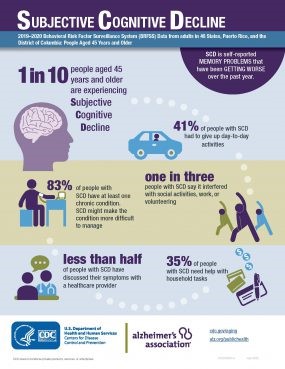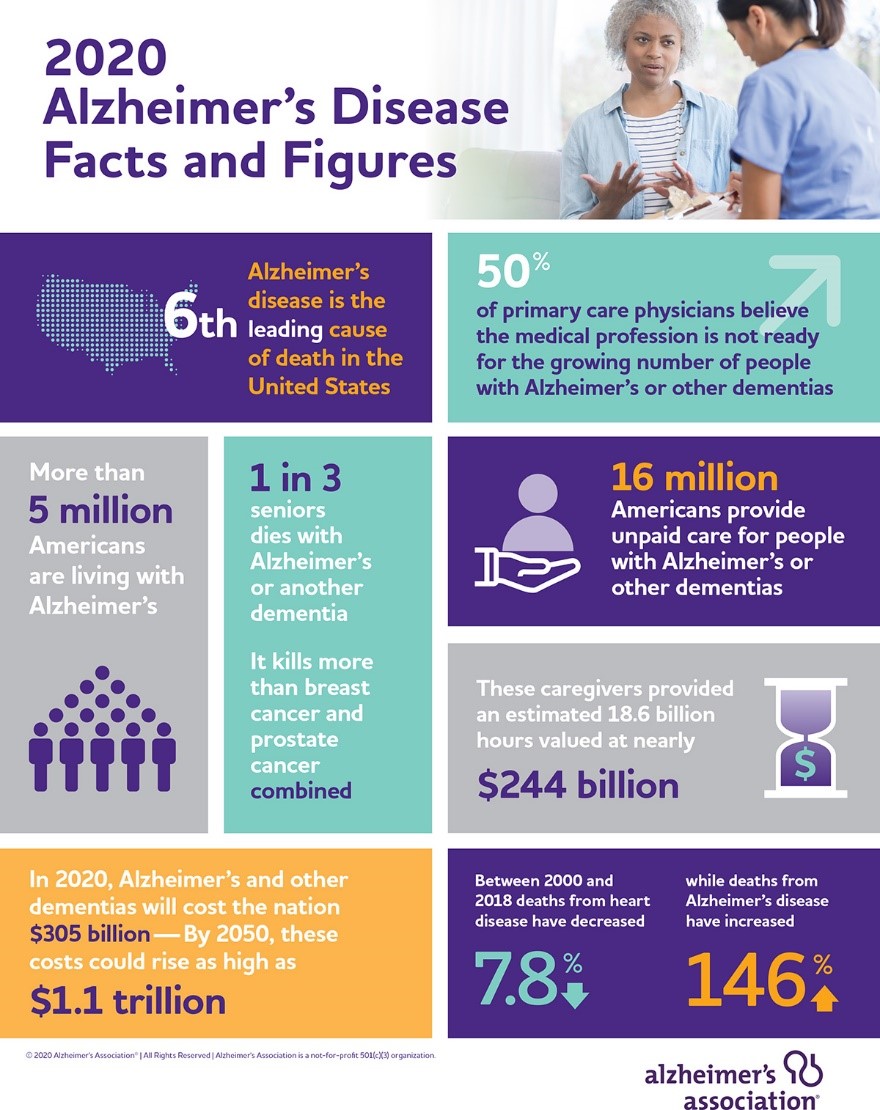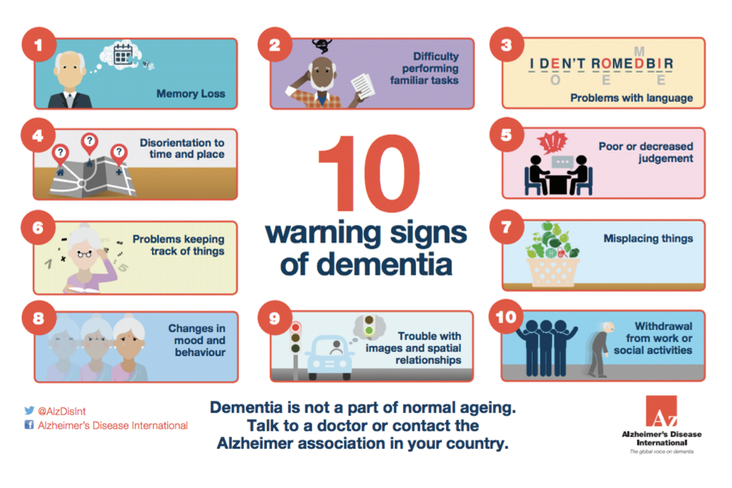What is Alzheimer’s Disease?
- Alzheimer’s disease is the most common type of dementia.
- It is a progressive disease beginning with mild memory loss and possibly leading to loss of the ability to carry on a conversation and respond to the environment.
- Alzheimer’s disease involves parts of the brain that control thought, memory, and language.
- It can seriously affect a person’s ability to carry out daily activities.
Who has Alzheimer’s Disease?

- In 2020, as many as 5.8 million Americans were living with Alzheimer’s disease.
- Younger people may get Alzheimer’s disease, but it is less common.
- The number of people living with the disease doubles every 5 years beyond age 65.
- This number is projected to nearly triple to 14 million people by 2060.
- Symptoms of the disease can first appear after age 60, and the risk increases with age.

10 Warning Signs of Alzheimer's

- Memory often changes as people grow older.
- Some people notice changes in themselves before anyone else does.
- For other people, friends and family are the first to see changes in memory, behavior, or abilities.
- Memory loss that disrupts daily life is not a typical part of aging.
- People with one or more of these 10 warning signs should see a doctor to find the cause. Early diagnosis gives them a chance to seek treatment and plan for the future.
- Memory loss that disrupts daily life: forgetting events, repeating yourself or frequently relying on more aids to help you remember (like sticky notes or reminders).
- Challenges in planning or solving problems: having trouble paying bills or cooking recipes you have used for years.
- Difficulty completing familiar tasks at home, at work, or at leisure: having problems with cooking, driving places, using a cell phone, or shopping.
- Confusion with time or place: having trouble understanding an event that is happening later or losing track of dates.
- Trouble understanding visual images and spatial relations: having more difficulty with balance or judging distance, tripping over things at home, or spilling or dropping things more often.
- New problems with words in speaking or writing: having trouble following or joining a conversation or struggling to find a word you are looking for (saying “that thing on your wrist that tells time “Instead of “watch”).
- Misplacing things and losing the ability to retrace steps: placing car keys in the washer or dryer or not being able to retrace steps to find something.
- Decreased or poor judgment: being a victim of a scam, not managing money well, paying less attention to hygiene, or having trouble taking care of a pet.
- Withdrawal from work or social activities: not wanting to go to church or other activities as you usually do, not being able to follow football games or keep up with what’s happening.
- Changes in mood and personality: getting easily upset in common situations or being fearful or suspicious.
https://www.cdc.gov/aging/healthybrain/pdf/10-Warning-Signs-HBI-Road-Map-508.pdf
Resources on Aging, Alzheimer's Disease and Cognitive Health
Aging
CDC Healthy Brain Initiative
Other Alzheimer’s Disease and Cognitive Health Resources
https://www.cdc.gov/aging/aginginfo/alzheimers.htm#anchor_1489431553